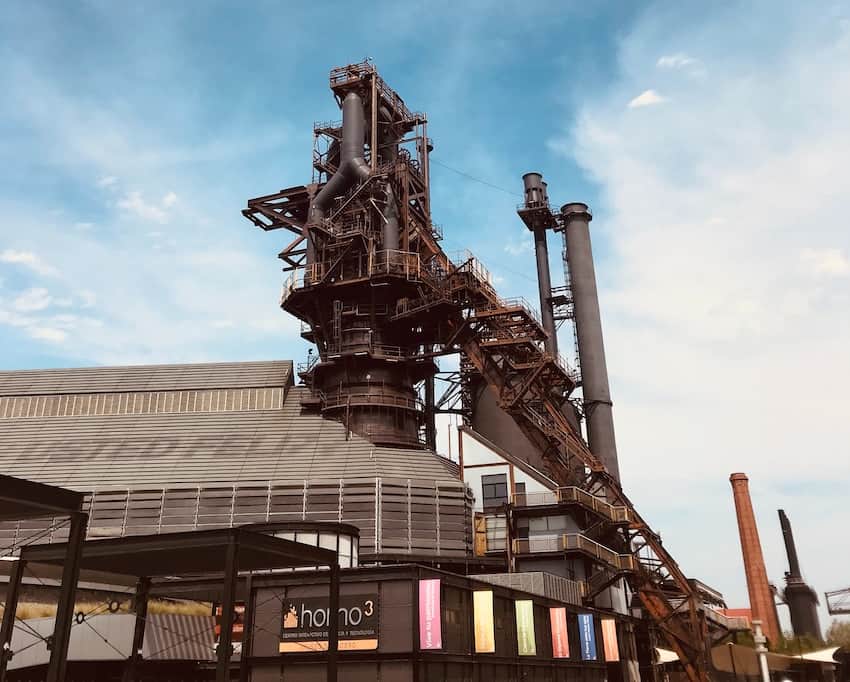The Federal Electricity Commission (CFE) currently has a 54% share of Mexico’s electricity market and is “ready” to provide the power required to meet nearshoring-related demand, the state-owned company’s director said Thursday.
Manuel Bartlett, an 87-year-old political veteran who was a federal interior minister in the ’80s and governor of Puebla in the ’90s, gave an update on the health of the CFE at President Andrés Manuel López Obrador’s morning press conference. In sum, the company is fighting fit, he asserted.

“At the beginning of this administration there was a fatalistic projection about the future of the CFE,” Bartlett said, explaining that the prediction was that its share of the electricity generation market would fall to just 16% from 62% before the energy reform carried out by the previous government that opened up the market to private and foreign companies.
Faced with that scenario, López Obrador ordered the “rescue” of the CFE so that it would have a 54% share of the market before the end of his term, he said.
The president’s order has been fulfilled, Bartlett said, explaining that the CFE has managed to prevent the predicted decline in its electricity generation capacity through “unprecedented” investment in maintenance and the construction of new power plants and “electricity networks.”
“Today, Mexico has a truly public company, capable of achieving its historic mission of taking electricity to the entire country at the lowest possible cost,” the CFE director said.
Bartlett outlined a range of projects the CFE has initiated and/or invested in, including solar parks in Sonora and Yucatán, the rehabilitation of “our emblematic hydroelectric plants” and combined-cycle plants in five cities including Mérida, San Luis Río Colorado and Tuxpan.
He also noted that the CFE has purchased power plants, including 13 that were owned by Spanish energy company Iberdrola.
López Obrador announced the deal last April, describing it at the time as a “new nationalization of the electricity industry.”
He said the purchase would allow the CFE to increase its share of the electricity market from just under 40% to 55.5%.

On Thursday, Bartlett said that the purchase will in fact allow CFE to reach a 61% share of the market this September.
He noted that gas is an “essential input” for the CFE as it fuels “60% of our plants with minimal contaminating effects and lower generation costs,” but the company is also a significant user of coal.
Later in the press conference, Bartlett acknowledged the growing “nearshoring phenomenon” in Mexico, and declared that the CFE is “ready to provide the electricity necessary for this phenomenon.”
“There is not the slightest doubt. We have everything ready to supply all of the companies that establish themselves in national territory with sufficient electricity,” he said.
“… We have sufficient energy to attend to all of the companies and factories that set up in our country,” Bartlett reiterated.
Continuing to meet the country’s electricity needs won’t come cheap, according to the Mexican Energy Association (AME).
To meet growing demand, including from companies nearshoring to Mexico, the government will need to invest US $120 billion over the next 15 years, or $8 billion per year, in electricity generation and transmission, the AME said last week.
Bartlett mainly kept his focus on what the CFE has already done and is currently doing.

“We’re working hand in hand with local governments,” he told reporters.
“We’re supporting the Bajío [region] with its industrial corridor projects; Yucatán with a solar plant for public transport; Nuevo León with the processing of permits for the Tesla plant; Tamaulipas with four development hubs; Hidalgo with steel investments.”
Bartlett also said that the CFE has complied with López Obrador’s order to not increase electricity rates in real terms.
“The rates haven’t increased more than inflation,” he said. “All sectors have benefited – homes, companies, industries and businesses.”
After noting that the CFE is also involved in major infrastructure projects such as the Maya Train railroad and the Isthmus of Tehuantepec Interoceanic Train, Bartlett said that the state-owned electricity company is “financially stronger than ever.”
“It has more of its own revenue than any other national company. Upon our arrival [in late 2018], the company’s own revenues were half a trillion pesos. Today, with increasing electricity rates in real terms, CFE’s revenues have increased almost 40%, he said.
“… At the end of this administration, together [the president and I] will hand over a strengthened public company,” Bartlett said.
López Obrador asserted that his government has “rescued an extremely important public company.”

Previous governments wanted to get rid of the CFE, but “it was decided to strengthen it because it’s very important,” he said.
If the government hadn’t stepped in to rescue the company, foreign firms would dominate the electricity market in Mexico, charging consumers “whatever they wanted,” López Obrador asserted.
Policies the federal government has implemented as part of its “rescue” of the CFE haven’t been well received by Mexico’s North American trade partners.
Both the United States and Canada challenged the nationalistic policies under the USMCA trade pact in 2022, arguing that U.S. and Canadian companies operating in Mexico are being treated unfairly.
The dispute still hasn’t been resolved, even though the United States has been pushing for prompt resolution almost since the beginning while refraining from requesting the establishment of a dispute settlement panel, as it did in a separate conflict over corn.
With reports from La Jornada, Reforma and El Universal
